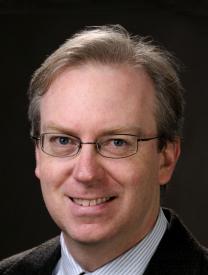- Christopher H. Browne Distinguished Professor of Physics 2016-
- Walter H. and Leonore C. Annenberg Professor in the Natural Sciences, 2014 - 2016
- Class of 1965 Endowed Term Chair 2012 - 2014
- Associate Chair for Undergraduate Affairs, Physics Department, University of Pennsylvania, 2002-2005
- Associate Professor of Physics, University of Pennsylvania 1997-2006
- Assistant Professor of Physics, University of Pennsylvania 1991-1997
- Postdoctoral Associate, IBM T.J. Watson Research Center, Yorktown Heights, NY 1989-1991
Honors include:
- Benjamin Franklin Medal, 2015
- Elected to National Academy of Sciences, 2014
- Lindback Award for Distinguished Teaching, University of Pennsylvania, 2014
- Physics Frontiers Prize, Fundamental Physics Prize Foundation, 2013
- P.A.M Dirac Medal and Prize, 2012
- Simons Investigator grant, 2012
- Oliver Buckley Prize, 2012
- Condensed Matter Europhysics Prize, 2010
- Fellow of the American Physical Society 2006-
- IBM Predoctoral Fellowship 1988-1989
- National Science Foundation Graduate Fellow 1985-1988
Ph.D. MIT 1989
B.S. University of Chicago 1985
My research is focused on the theory of quantum electronic phenomena in solids. This is an exciting branch of physics because the technology for manipulating and controlling matter on a microscopic scale continues to advance in fascinating directions. The combination of molecular beam epitaxy and lithographic techniques allows semiconductor structures to be fabricated with dimensions measured in nanometers and with such purity that electrons travel microns before scattering. Such structures can effectively confine electrons to one dimensional “quantum wires” and zero dimensional “quantum dots”. At the same time, advances in “bottom up” technology have increased control over the self assembly of matter on the atomic scale. For example, since the mid 1990’s it has been possible to controllably synthesize carbon nanotubes, which are essentially perfect molecular quantum wires. More recently, it has become possible to individual planes of graphene, which is a two dimensional structure that is a single atom thick and has fascinating electronic properties. These techniques open the door to a wide variety of materials and structures which may be important for technological innovation. They also point to a number of issues in fundamental physics. In structures of reduced dimensionality, the collective behavior of electrons is strongly influenced by quantum interference, electron-electron interactions and disorder. These theoretical issues are at the forefront of modern quantum many-body physics and form the core of my research program. My expertise combines the fields of mesoscopic physics, the study of semiconductor nanostructures and strongly correlated electron systems. My approach is often to build simple models of materials which capture robust features that transcend sample specific details. Such effective theories allow the powerful techniques of quantum field theory and statistical mechanics and numerical simulation to be applied to characterize new phases, describe critical behavior and uncover topological order. My work is usually inspired by experiments - either to explain existing data or to propose experimental methods for probing new physics. I see myself as a translator between the deep and mathematically intensive theories of quantum condensed matter and experimental phenomenology. Specific problems which I have been interested in recently include theories of one dimensional conductors, the fractional quantum Hall effect, carbon nanotubes, graphene, the quantum spin Hall effect, topological insulators, and topological quantum computing.
Phys 171: Honors Physics (EM)
- “Superconducting Proximity Effect and Majorana Fermions at the Surface of a Topological Insulator,” Liang Fu and C.L. Kane, arXiv:0707.1692 (2007).
- “Topological Insulators in Three Dimensions,” Liang Fu, C.L. Kane and E.J. Mele, Phys. Rev. Lett. 98, 106803 (2007).
- “Z_2 Topological Order and the Quantum Spin Hall Effect,” C.L. Kane and E.J. Mele, Phys. Rev. Lett. 95, 246802 (2005).
- “Quantum Spin Hall Effect in Graphene,” C.L. Kane and E.J. Mele, Phys. Rev. Lett. 95, 226801 (2005).
- “Telegraph Noise and Fractional Statistics in the Quantum Hall Effect,” C.L. Kane, Phys. Rev. Lett. 90, 226802 (2003).
- “Sliding Luttinger liquid phases,” R. Mukhopadhyay, C.L. Kane and T.C. Lubensky, Phys. Rev. B 63, 5120 (2001).
- “Coulomb Interactions and Mesoscopic Effects in Carbon Nanotubes,” C.L. Kane, L. Balents and M.P.A. Fisher, Phys. Rev. Lett. 79, 5086 (1998).
- “Size Shape and Electronic Structure of Carbon Nanotubes,” C.L. Kane and E.J. Mele, Phys. Rev. Lett. 78, 1932 (1997).
- “Non Equilibrium Noise and Fractional Charge in the Quantum Hall Effect,” C.L. Kane and M.P.A. Fisher, Phys. Rev. Lett. 72, 724 (1994).
- “Transport through Barriers and Resonant Tunneling in an Interacting One Dimensional Electron Gas,” C.L. Kane and M.P.A. Fisher, Phys. Rev. B 46, 15233 (1992).

